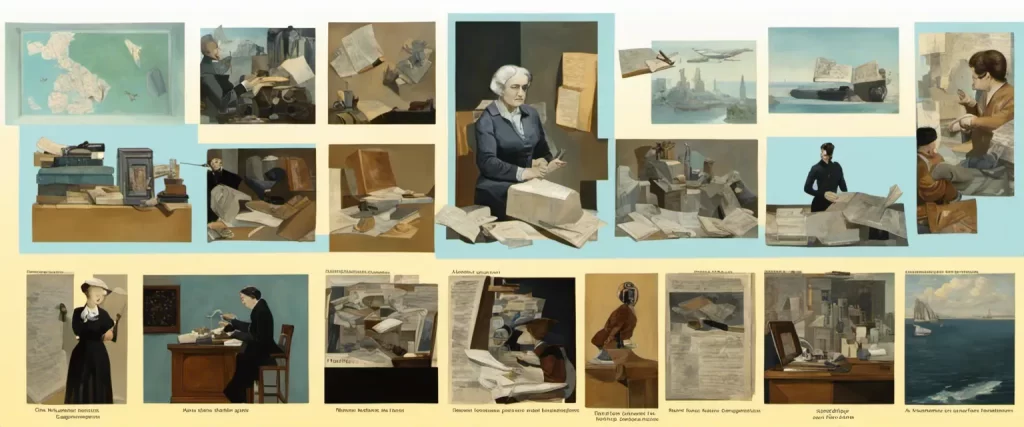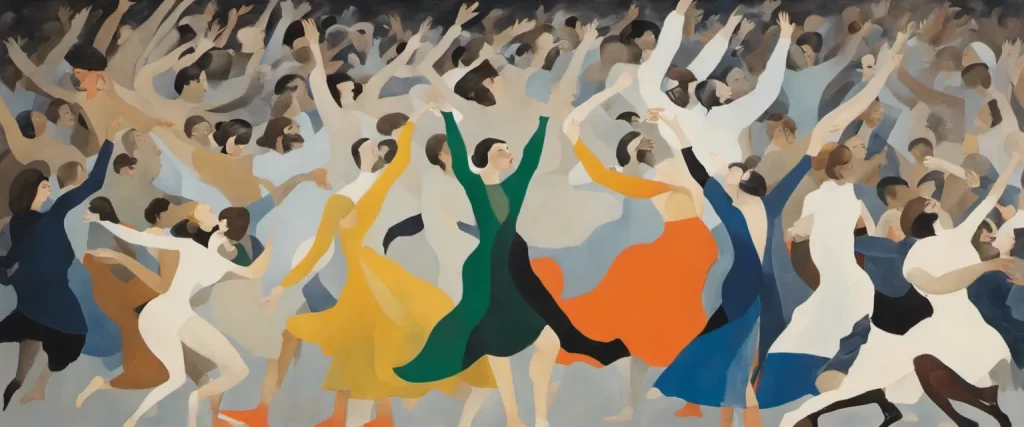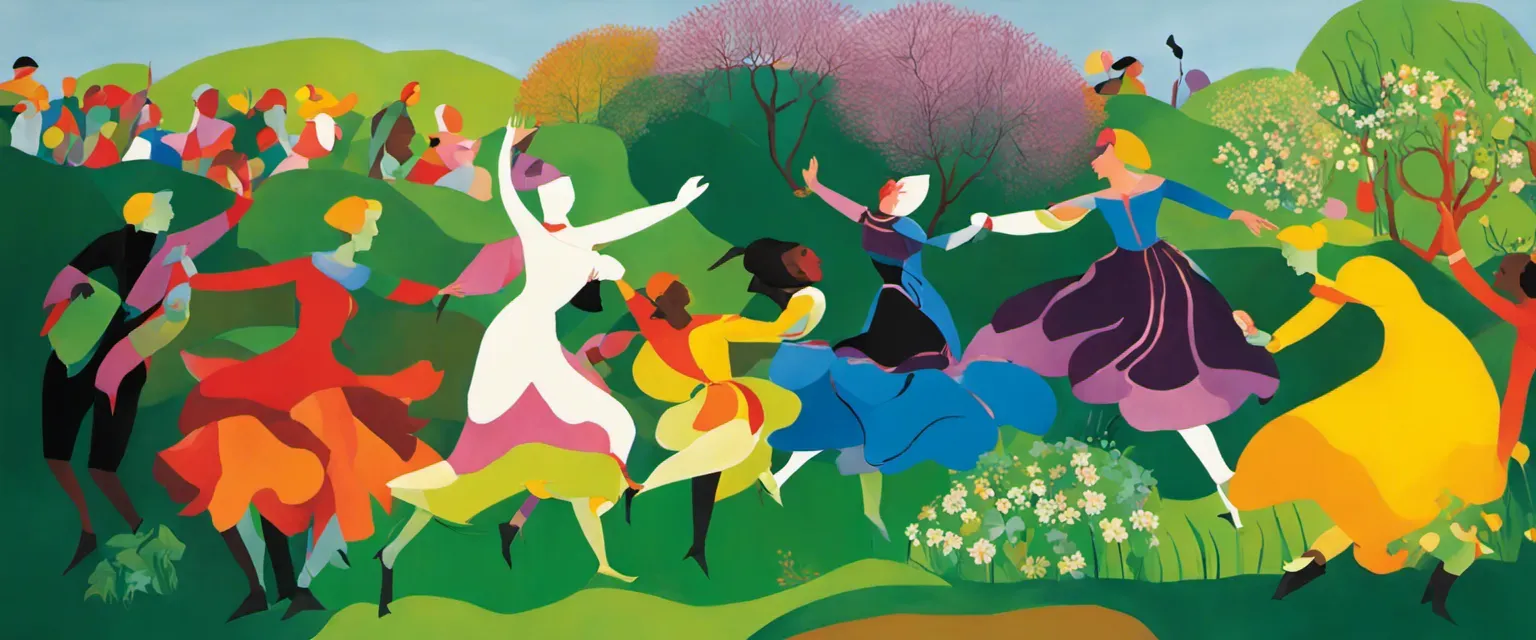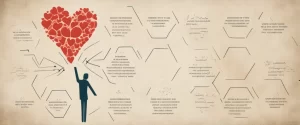——Rites of Spring by Modris Eksteins & The Zimmermann Telegram by Barbara W. Tuchman
In the vast realm of historical literature, few works stand out as captivating and profound as Modris Eksteins’ “Rites of Spring” and Barbara W. Tuchman’s “The Zimmerman Telegram.” These two books delve into diverse yet interconnected facets of history, offering invaluable insights into the cataclysmic events that shaped the twentieth century. Their meticulous research, insightful analysis, and engaging narrative styles make them worthy contenders for any student or historian’s reading list. By embarking on a comparative study of these two masterpieces, we can explore the intricate connections between the cultural revolution that unfolded during World War I in “Rites of Spring” and the geopolitical complexities encapsulated within “The Zimmermann Telegram.” Through this exploration, we aim to unravel the common threads and distinct approaches of these authors, shedding light on the transformative power of war and the significance of historical context in shaping human destinies.
Brief Summary of Two Books
Rites of Spring by Modris Eksteins
Rites of Spring” by Modris Eksteins is a cultural and historical account that explores the intersection of art, politics, and society in the early 20th century. The book focuses on the period between 1913 and 1923 and analyzes how this tumultuous decade shaped the modern world.
Eksteins starts by examining the cultural context leading up to World War I, emphasizing the role of avant-garde movements like Dadaism and Futurism. He suggests that these artistic styles represented a collective rejection of traditional values and were a response to the growing disillusionment with the Victorian era.
The author then delves into the artistic and cultural shifts occurring in Europe and the United States during this time, particularly in Germany. Eksteins argues that these changes were deeply connected to the larger political and social unrest that was brewing.
He explores events such as the outbreak of the war, the Russian Revolution, and the rise of fascism, and asserts that they all share a common thread— the need for renewal and the rejection of worn-out traditions. Eksteins argues that the avant-garde movements and the war itself were engaged in parallel struggles for liberation and renewal, albeit on different scales.
The author also examines how the youth, who formed the majority of soldiers in World War I, were both the victims and perpetrators of violence. He delves into the war’s brutal nature and its impact on the psyche of the soldiers and society as a whole.
Eksteins suggests that the war triggered a transformative shift in the collective consciousness, with the old world crumbling and a new one struggling to emerge. He argues that this transformative experience culminated in the Roaring Twenties period, with its embrace of hedonism and cultural experimentation.
In conclusion, “Rites of Spring” offers a thought-provoking exploration of how art, politics, and society intersected during a pivotal period in history. It underscores the profound impact of World War I on the cultural and intellectual landscape of the early 20th century.
The Zimmermann Telegram by Barbara W. Tuchman
The Zimmermann Telegram” by Barbara W. Tuchman is a non-fiction book that explores the events leading up to and following Germany’s attempt to involve Mexico in World War I. The book primarily centers around the infamous Zimmermann Telegram, a secret message sent by German Foreign Secretary Arthur Zimmermann to the German ambassador in Mexico, proposing a military alliance against the United States.
Tuchman delves into the strategic background of the telegram, providing historical context and explaining how Germany’s unrestricted submarine warfare and the British naval blockade had pushed the United States to the brink of entering the war. The author meticulously reveals how British intelligence intercepted and deciphered the telegram, ultimately leading to its delivery to President Woodrow Wilson.
Tuchman also investigates the impact of the telegram on America’s public opinion and the subsequent events that unfolded. She examines how the American public, shocked by the content of the telegram, rallied behind the cause of entering the war and shaped Wilson’s decision-making process. The author delves into the debates, negotiations, and political maneuvering that took place within the United States government as it considered its response to the telegram.
Additionally, Tuchman highlights the wider international repercussions of the Zimmermann Telegram. She explores the fragile relationship between Germany and Mexico, the attitudes of the Mexican government towards the proposal, and the subsequent tense interactions between Germany and the United States. The book also touches on the role of Britain’s Secret Service, especially Room 40, in obtaining and deciphering the telegram.
Overall, “The Zimmermann Telegram” is a comprehensive and compelling account of an often-overlooked aspect of World War I. Tuchman masterfully weaves together geopolitical factors, diplomatic maneuvers, and the human drama surrounding the events, shedding light on the impact that the telegram had on shaping the course of the war and the role of America in it.
Comparison between Two Books

Similarities in History Of Wars
Both “Rites of Spring” by Modris Eksteins and “The Zimmermann Telegram” by Barbara W. Tuchman discuss the historical backdrop of wars and their impact on societies. Here are the similarities between these two books in terms of their depiction of the history of wars:
1. Contextualization: Both books provide a detailed contextualization of the historical events leading up to each respective war. “Rites of Spring” provides a comprehensive overview of World War I, while “The Zimmermann Telegram” focuses on the events surrounding the United States’ entry into the war, specifically the diplomatic intrigue surrounding the German attempt to draw Mexico into a military alliance.
2. Societal impact: Both books emphasize the profound impact that wars have on societies. Rites of Spring” delves into the societal, cultural, and psychological consequences of World War I, highlighting the disillusionment, trauma, and upheaval experienced by the people involved. Similarly, “The Zimmermann Telegram” explores the effect of war propaganda, espionage, and fear on American society, including the government’s use of the telegram as a means of galvanizing public support for the war.
3. Political machinations: Both books shed light on the political machinations involved in the lead-up to war. “Rites of Spring” unveils the power struggle between nations, the alliances formed to serve political interests, and the complex web of negotiations and diplomacies that ultimately led to the outbreak of World War I. “The Zimmermann Telegram” focuses on the secret diplomatic correspondence between Germany and Mexico, examining how it influenced the United States’ decision to enter the war and how it laid bare the politics and espionage behind conflict.
4. Technological advancements: Both books address the technological advancements that impacted warfare during their respective time periods. “Rites of Spring” explores how the industrialization and technological advancements of the late 19th and early 20th centuries transformed warfare, giving rise to new and more devastating weapons. “The Zimmermann Telegram” touches upon the use of encrypted communication and telegraphy, underscoring how advancements in technology altered the diplomatic landscape during World War I.
Overall, these books provide readers with a comprehensive understanding of the history of wars by delving into the underlying political, social, and technological factors that shaped these conflicts. They highlight the immense impact of wars on societies, revealing the human experience of those who lived through these periods of conflict.
Divergences in History Of Wars
Rites of Spring by Modris Eksteins and The Zimmermann Telegram by Barbara W. Tuchman are both highly regarded works of historical non-fiction that explore different aspects of warfare and its impact on society. While both books touch upon the theme of war, they diverge in terms of their focus, time periods, and subject matter.
Rites of Spring examines the relationship between World War I and the cultural upheaval of the early 20th century, particularly the societal shift from the old world to the modern era. Eksteins argues that the war was not only a product of political factors, but also of art, culture, and mass psychology. He delves into the impact of the war on artistic movements, such as Dadaism, Futurism, and Expressionism, suggesting that the experiences of the Great War shattered traditional values and led to a profound reevaluation of society.
In contrast, The Zimmermann Telegram centers around a specific event during World War I – the interception and deciphering of a secret message from German Foreign Secretary Arthur Zimmermann to the German Minister in Mexico. Tuchman meticulously reconstructs the events leading up to this interception and the subsequent diplomatic and military consequences. The book provides insights into the secret practices of diplomacy, espionage, and cryptography during that time period.
While both books explore the history of wars, Rites of Spring adopts a broader perspective that encompasses the cultural, psychological, and artistic impacts of World War I, whereas The Zimmermann Telegram focuses on a specific incident that had significant ramifications on the course of the war.
In terms of time period, Rites of Spring takes a comprehensive look at the period leading up to and following World War I, exploring the cultural shifts of the early 20th century. On the other hand, The Zimmermann Telegram narrows its focus to the years 1917-1918, examining the specific events surrounding the intercepted message.
In conclusion, while both Rites of Spring and The Zimmermann Telegram delve into the history of wars, they differ in their scope, focus, and time periods. Rites of Spring offers a wider examination of the cultural impacts of World War I, while The Zimmermann Telegram investigates a specific event and its consequences during the war. Both books contribute valuable insights into the understanding of history and its link to warfare.

Conclusion
Both “Rites of Spring” by Modris Eksteins and “The Zimmermann Telegram” by Barbara W. Tuchman are highly regarded books in their respective fields. While their subject matters differ, it ultimately depends on your personal interests to determine which book is more worthy of reading.
“Rites of Spring” offers a unique perspective on the cultural and historical significance of World War I. Modris Eksteins explores the connection between the war and the emergence of modernism, focusing particularly on music, art, and dance. This book is praised for its in-depth analysis and thought-provoking insights into the impact of the war on artistic expression. If you are interested in the intersection of culture and history, “Rites of Spring” would be an excellent choice.
On the other hand, “The Zimmermann Telegram” delves into the political intrigue surrounding one of the pivotal events leading up to the United States’ entry into World War I. Barbara W. Tuchman meticulously uncovers the secret diplomatic communication between Germany and Mexico, which aimed to provoke Mexico into attacking the U.S. This historical account is highly praised for its detailed research, narrative style, and the portrayal of the personalities involved. If you are interested in political history, espionage, and international relations, “The Zimmermann Telegram” is a must-read.
Ultimately, both books have their merits and offer valuable perspectives on different aspects of World War I. It is recommended to consider your personal interests and preferences to determine which book aligns more with your reading preferences.



